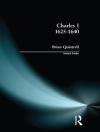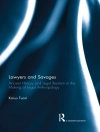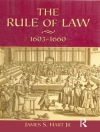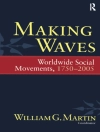Among the EU states in Eastern and Northern Europe, Poland is the most populous one. In terms of its economic forte and financial balance sheet, it was not a clear-cut conclusion that Poland ought to join the EU. Thus, the Poles’ decision, made in a referendum, to join, may be interpreted as their self-identity resolution: an unequivocal assertion that they are first and foremost Europeans.The peasants in Poland from the 9th century did not have a Polish identity. Such identity was mainly in possession of the nobility and, starting in the 18th century, some of the urban dwellers’ as well. A true Polish identity was crystallized during WWII.The ones who saw Polish nationality as the birthright of all ethnic Poles, peasants included, were the leaders of the Polish Communist Party; they knew how to stand firm in the face of the Soviets during 1945-1989, while adhering to an independent line vis-a-vis Moscow regarding those issues they considered vital for the Poles (e.g., the Polish agrarian policy which did not toe the line Moscow sought to dictate). Thanks to such a stance, Polish nationality started being viable, including peasants. That nationality adopted included the thousand years of old Polish myths and history, and the epic memory of warfare conducted by Polish kings and noblemen.All of the above as well as the rise of the Solidarity movement headed by Lech Walesa, stand witness to the Polish nationality’s inner strength. This was an inverse state of affairs to the absence of Polish nationality for centuries (until it began budding in WWI).During the period between the two world wars, Poles readily exhibited compliance. Thus, for instance, after just a few days of street clashes in Warsaw they submitted to Pilsudski’s dictatorship that instilled severe censorship and incarcerated opposition figures without encountering any meaningful impediment from the Polish public. Even after Pilsudski’s death, the Poles submissiveness persisted. That state of feebleness is the inverse state to that which the Poles exhibited between 1945-1989, under the leadership of the Communist Party and (later) Solidarity, as described previously.Such an inverse state may be understood from the fact that in post-1945 Poland, nearly all the state’s citizens were ethnically Polish and therefrom their nationality crystallized. Conversely, during the period in between the two world wars ethnic Poles constituted only 70 percent of the citizenry. This allows for the understanding that a state that is ethnologically compact can more easily form a sound nationality from within.This volume demonstrates that the Polish nationality, which only existed for a few decades when Poland joined the European Union, was fledgling (from a research point of view) but ancient in terms of the mythological sentiments sensed by the Poles. The quality of nationality was deeply rooted, vibrant and multi-generational just as the Poles crowned over themselves a pan-European sovereign (the EU) which was preferred over their own unique nationality; thus expressing their centuries’ old, deep-seeded desire to be an integral part of Europe.
Yehuda Cohen
Poles [PDF ebook]
Myths and Reality
Poles [PDF ebook]
Myths and Reality
Beli ebook ini dan dapatkan 1 lagi GRATIS!
Format PDF ● Halaman 344 ● ISBN 9781536125825 ● Editor Yehuda Cohen ● Penerbit Nova Science Publishers ● Diterbitkan 2017 ● Diunduh 3 kali ● Mata uang EUR ● ID 7217370 ● Perlindungan salinan Adobe DRM
Membutuhkan pembaca ebook yang mampu DRM












